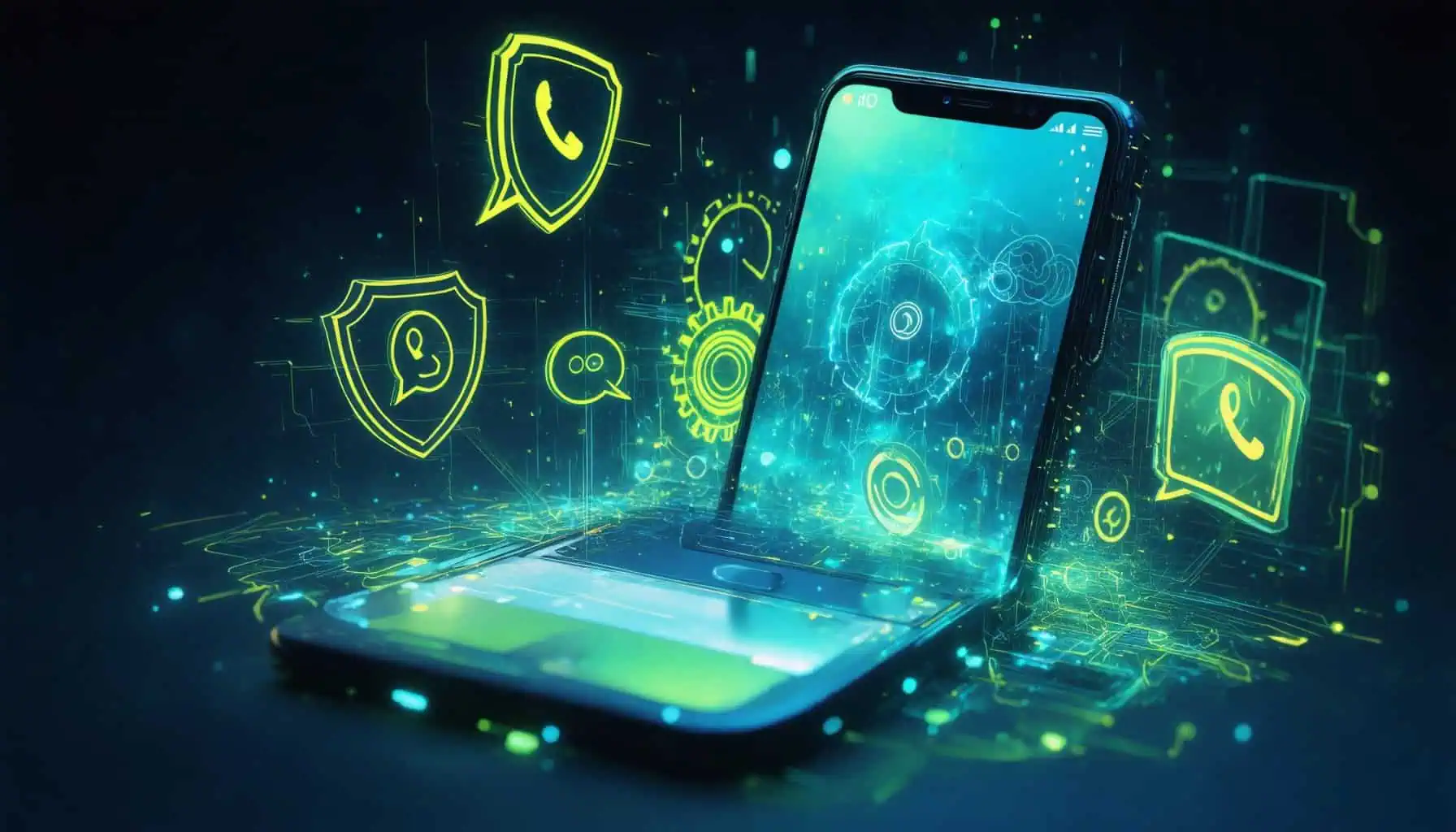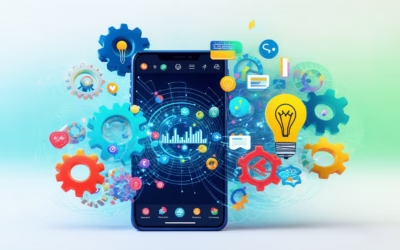Key Takeaways
- WhatsApp bots revolutionize communication by providing automated responses, enhancing user engagement and customer support.
- Safety measures for bots on WhatsApp include data protection, user awareness, and compliance with regulations like GDPR.
- Identifying bots involves recognizing traits such as response consistency, lack of personalization, and quick reply times.
- Businesses benefit from WhatsApp bots through increased efficiency, 24/7 availability, and cost reduction, while individuals enjoy convenience with automated reminders and information retrieval.
- Creating a WhatsApp bot involves choosing a development platform, setting up a business account, and designing a conversation flow to enhance user experience.
In today’s digital landscape, the bot on WhatsApp phenomenon is transforming the way we communicate, offering innovative solutions for both personal and business interactions. This article delves into the multifaceted world of WhatsApp bots, exploring their functionality, safety, and the myriad of benefits they provide. We will begin by defining what a bot in WhatsApp is and how it enhances user experience. Next, we will evaluate the safety of bots on WhatsApp, providing best practices to ensure secure interactions. Additionally, we will guide you on identifying whether you are chatting with a bot and discuss the signs that distinguish human interactions from automated ones. Furthermore, we will explore the reasons behind the increasing use of WhatsApp bots, including their advantages for businesses and personal use cases. As we navigate through the potential risks, such as bot scammers, we will also equip you with strategies to protect yourself. Finally, for those interested in innovation, we will provide a comprehensive guide on how to create a bot for WhatsApp, complete with resources and tools to get you started. Join us as we uncover the essential insights and practical knowledge surrounding creating a WhatsApp bot and harnessing its full potential.
What is a bot on WhatsApp?
A bot on WhatsApp is an advanced computer program designed to simulate human-like text conversations on the WhatsApp messaging platform. These bots leverage artificial intelligence (AI) and natural language processing (NLP) to engage users in real-time, providing automated responses to a wide range of inquiries. By integrating a WhatsApp bot, businesses can enhance their communication strategies and improve user engagement.
Understanding the functionality of bots in WhatsApp
WhatsApp bots serve multiple functions that can significantly benefit businesses and users alike. Key functionalities of WhatsApp chatbots include:
- Customer Support: They can handle frequently asked questions, troubleshoot issues, and provide information about products or services, significantly enhancing customer service efficiency.
- Sales Automation: WhatsApp chatbots can guide users through the purchasing process, recommend products based on user preferences, and facilitate transactions directly within the chat interface.
- Appointment Scheduling: Businesses can utilize chatbots to manage bookings and appointments, sending reminders and confirmations to users seamlessly.
- Feedback Collection: Chatbots can solicit customer feedback post-interaction, helping businesses gather insights to improve their services.
- Integration with WhatsApp Business API: These chatbots can be integrated into the WhatsApp Business Platform, allowing businesses to scale their communication efforts while maintaining a personal touch.
According to a report by Juniper Research, the use of chatbots in messaging apps like WhatsApp is expected to save businesses over $8 billion annually by 2022, highlighting their growing importance in digital communication strategies.
The role of bots in enhancing user experience on WhatsApp
WhatsApp bots play a crucial role in enhancing user experience by providing instant responses and personalized interactions. By automating routine tasks, these bots free up human agents to focus on more complex inquiries, thereby improving overall service quality. The ability to create a bot for WhatsApp allows businesses to tailor their communication strategies to meet specific user needs, ensuring a more engaging and efficient interaction.
Furthermore, the integration of WhatsApp bots with various platforms, such as e-commerce systems, allows for seamless transactions and customer support, making it easier for users to engage with brands. This not only enhances user satisfaction but also drives higher conversion rates, making WhatsApp bots an essential tool for modern businesses.
Are WhatsApp Bots Safe?
WhatsApp bots can be safe, but their security largely depends on how they are designed and managed. Here are key considerations regarding their safety:
- Data Storage and Privacy: WhatsApp bots, like other AI chatbots, store user data on servers. This data can include personal information, chat histories, and preferences. If these servers are not adequately secured, they can become targets for cybercriminals. According to a report by Bitdefender, data breaches can lead to unauthorized access to sensitive information, making it crucial for bot developers to implement robust security measures.
- End-to-End Encryption: WhatsApp employs end-to-end encryption for messages, which means that only the sender and receiver can read the messages. However, when using bots, it is essential to ensure that the bot’s interactions also adhere to privacy standards. Developers should ensure that any data collected by the bot is encrypted and stored securely.
- User Awareness: Users should be cautious about the information they share with WhatsApp bots. Avoid sharing sensitive personal details, such as financial information or passwords. Educating users about the types of information that should not be shared can mitigate risks.
- Bot Permissions: When interacting with a WhatsApp bot, users should be aware of the permissions they grant. Bots may request access to contacts or other data, which can pose privacy risks if mismanaged. Users should review permissions and only engage with bots from trusted sources.
- Regular Updates and Security Audits: Developers should regularly update their bots and conduct security audits to identify and fix vulnerabilities. Keeping software up to date is a fundamental practice in cybersecurity.
- Compliance with Regulations: Developers must comply with data protection regulations, such as GDPR or CCPA, which govern how personal data is collected, stored, and processed. Compliance not only enhances user trust but also reduces legal risks.
In conclusion, while WhatsApp bots can be safe, their security is contingent upon proper data management, user education, and adherence to best practices in cybersecurity. For further reading on chatbot security, refer to resources from cybersecurity experts like Bitdefender and guidelines from the International Association for Privacy Professionals (IAPP).
Best Practices for Ensuring Safety While Using Bots on WhatsApp
To enhance the safety of using bots on WhatsApp, consider the following best practices:
- Choose Reputable Bots: Always opt for bots developed by reputable companies or developers. Research their background and read user reviews to ensure they have a good track record.
- Limit Personal Information: Be mindful of the information you share with WhatsApp bots. Avoid providing unnecessary personal details that could be misused.
- Review Bot Permissions: Before interacting with a bot, check the permissions it requests. Only grant access to information that is essential for the bot’s functionality.
- Stay Informed: Keep up to date with the latest security practices and updates related to WhatsApp and its bots. This knowledge can help you identify potential risks.
- Report Suspicious Activity: If you encounter a bot that seems suspicious or is asking for sensitive information, report it to WhatsApp immediately.
By following these best practices, users can significantly reduce the risks associated with using bots on WhatsApp, ensuring a safer and more enjoyable experience. For more insights on creating a bot for WhatsApp, check out our guide on how to create a bot for WhatsApp.
How do I know if someone is a bot on WhatsApp?
Identifying whether you’re interacting with a bot on WhatsApp can enhance your communication experience. Here are some common characteristics to look for:
Identifying common characteristics of bots in WhatsApp
To determine if someone is a bot on WhatsApp, consider the following indicators:
- Response Consistency: Bots often provide consistent responses regardless of the conversation’s context. If the replies seem generic or repetitive, it may indicate a bot.
- Lack of Personalization: Bots typically do not engage in personalized conversation. If the responses lack specific references to previous messages or seem overly scripted, this could be a sign.
- Speed of Replies: Bots can respond almost instantly, while human responses may take longer, especially if they require thought or are multitasking.
- Limited Understanding: Bots may struggle with complex questions or nuanced topics. If the conversation veers off-script and the responses become irrelevant or nonsensical, it’s likely a bot.
- Absence of Emotional Cues: Bots usually lack emotional intelligence. If the conversation feels flat or devoid of empathy, it may be a bot.
- Inability to Handle Small Talk: Bots often have difficulty with casual conversation or humor. If the interaction feels mechanical and lacks spontaneity, this could indicate a bot.
- Use of Emojis and GIFs: While some bots can use emojis, their usage may feel out of place or overly formal. A human typically uses these elements more naturally.
For further insights, research from the Journal of Human-Computer Interaction highlights the importance of conversational context in distinguishing between human and bot interactions (Kelley et al., 2021). Understanding these nuances can enhance your ability to identify bots effectively.
Tools and methods to detect bots on WhatsApp
There are several tools and methods you can use to detect bots on WhatsApp:
- Bot Detection Software: Utilize specialized software that analyzes chat patterns and identifies bot-like behavior.
- Manual Analysis: Pay attention to the conversation flow. If responses are too quick or lack depth, it may indicate a bot.
- Third-Party Services: Platforms like Chatbots.org provide resources and tools for identifying and understanding bots.
- Community Feedback: Engage with online communities or forums to share experiences and learn from others about identifying bots.
By employing these tools and methods, you can enhance your ability to discern between human and bot interactions on WhatsApp, ensuring a more authentic communication experience.
Am I chatting with a bot on WhatsApp?
Yes, you may be chatting with a bot on WhatsApp if you notice certain characteristics in the conversation. Here are key indicators to help you identify an AI chatbot:
- Repetitive Responses: AI chatbots often generate replies based on a limited set of pre-programmed responses. If you notice that the answers are similar or identical regardless of how you phrase your question, it’s likely you’re interacting with a bot.
- Lack of Personalization: Bots typically do not provide personalized responses. If the replies seem generic and do not reference your specific context or previous messages, this is a strong sign of an AI.
- Inconsistent Answers: When you ask the same question multiple times, a human would likely provide varied responses based on their thoughts or feelings. In contrast, a bot may give the same or very similar answers each time.
- Delayed Responses: While bots can respond quickly, they may also take longer to reply if they are processing complex queries. However, if the response time is consistently fast and lacks the natural pauses typical in human conversation, it may indicate a bot.
- Limited Understanding of Context: AI chatbots may struggle with nuanced questions or context shifts. If the conversation feels disjointed or the bot fails to grasp the context of your inquiries, it’s likely an automated system.
Differences between human and bot interactions on WhatsApp
Understanding the differences between human and bot interactions on WhatsApp can enhance your communication experience. Here are some key distinctions:
- Response Speed: Bots typically respond almost instantaneously, while humans may take time to think and reply, leading to natural pauses in conversation.
- Emotional Intelligence: Humans can express emotions and empathy, adapting their responses based on the emotional tone of the conversation. Bots, however, lack true emotional understanding and may respond in a mechanical manner.
- Complex Queries: Humans can handle complex, multi-layered questions and provide nuanced answers. Bots may struggle with such inquiries, often providing simplistic or irrelevant responses.
- Contextual Awareness: Humans can remember past interactions and adjust their responses accordingly. Bots may not retain context effectively, leading to repetitive or irrelevant answers.
- Engagement Level: Conversations with humans tend to be more engaging and dynamic, while interactions with bots can feel transactional and less personal.
Why Would Someone Use a Bot?
Using a bot on WhatsApp can significantly enhance both personal and business interactions. Here are some compelling reasons why individuals and organizations choose to implement WhatsApp bots:
Benefits of Using Bots on WhatsApp for Businesses
Businesses leverage bots in WhatsApp for several key advantages:
- Efficiency and Speed: WhatsApp bots can handle multiple inquiries simultaneously, providing instant responses that improve customer satisfaction.
- 24/7 Availability: Unlike human agents, bots on WhatsApp can operate around the clock, ensuring that customer queries are addressed at any time.
- Cost Reduction: Automating routine tasks with a bot in WhatsApp can lower operational costs, allowing businesses to focus human resources on more complex issues.
- Data Collection and Analysis: Bots can gather valuable data from interactions, helping businesses refine their strategies based on user behavior.
- Personalization: Advanced WhatsApp bots can tailor interactions based on user preferences, enhancing engagement and loyalty.
- Scalability: Bots can easily scale to meet increased demand, especially during peak periods, without the need for additional staff.
- Error Reduction: By following predefined algorithms, creating a WhatsApp bot minimizes human error, ensuring higher accuracy in responses.
Personal Use Cases for WhatsApp Bots
Individuals also find value in using bots on WhatsApp for personal tasks:
- Automated Reminders: Users can set up bots to send reminders for important dates or tasks, helping them stay organized.
- Information Retrieval: Bots can provide quick access to information, such as weather updates or news, directly through WhatsApp.
- Entertainment: Some bots offer games or quizzes, providing a fun way to engage with friends and family.
- Learning and Education: Educational bots can assist users in learning new topics by providing quizzes and interactive content.
In summary, whether for business efficiency or personal convenience, creating a bot for WhatsApp can greatly enhance communication and engagement. For more insights on how to create a WhatsApp bot, explore our comprehensive guides.
What is a bot scammer?
A bot scammer refers to malicious automated software (bots) designed to exploit online systems for fraudulent purposes. These bots can perform a variety of deceptive activities, including:
- Automated Application Submissions: Bot scammers often use these programs to automatically fill out and submit loan or credit card applications using stolen or synthetic identities. This method allows fraudsters to bypass manual checks and gain access to financial resources quickly.
- Credential Stuffing Attacks: Bots can also be employed to carry out credential stuffing attacks, where they use stolen username and password combinations to gain unauthorized access to user accounts across various platforms.
- Fake Account Creation: Scammers utilize bots to create numerous fake accounts on social media and e-commerce sites, which can then be used for various fraudulent activities, including phishing scams and spreading misinformation.
- Data Scraping: Bots can scrape sensitive information from websites, such as personal data and financial details, which can be sold on the dark web or used for identity theft.
- Spam and Phishing Campaigns: Automated bots are frequently used to send out spam messages or phishing emails, tricking users into providing personal information or clicking on malicious links.
According to a report by the Federal Trade Commission (FTC), automated fraud schemes have increased significantly, with losses attributed to bot scams reaching billions of dollars annually. To protect against bot scams, individuals and organizations should implement robust security measures, such as multi-factor authentication and advanced bot detection technologies.
How to protect yourself from bot scams on WhatsApp
Protecting yourself from bot scams on WhatsApp involves several proactive measures:
- Verify Contacts: Always verify the identity of individuals or businesses before engaging in conversations, especially if they request sensitive information.
- Enable Two-Step Verification: Use WhatsApp’s two-step verification feature to add an extra layer of security to your account.
- Be Cautious with Links: Avoid clicking on suspicious links or downloading attachments from unknown contacts, as these may lead to phishing sites or malware.
- Report Suspicious Activity: If you encounter a bot scammer, report the account to WhatsApp and block the user to prevent further contact.
- Stay Informed: Keep up to date with the latest security practices and potential scams by following resources from cybersecurity experts and organizations.
For further reading on the impact of bot scams and preventive measures, refer to resources from the FTC and cybersecurity firms like BioCatch, which specialize in fraud detection and prevention.
How to create a bot for WhatsApp
Creating a bot for WhatsApp can significantly enhance your communication strategy, whether for personal use or business automation. Below is a step-by-step guide on how to create a WhatsApp bot for free, along with essential resources and tools to help you get started.
Step-by-step guide on creating a WhatsApp bot for free
To create a bot for WhatsApp, follow these steps:
- Choose a Bot Development Platform: Select a platform that supports WhatsApp bot creation. Popular options include Twilio and Messenger Bot, which provide user-friendly interfaces and comprehensive documentation.
- Set Up Your WhatsApp Business Account: Register for a WhatsApp Business account. This is essential as bots can only operate through business accounts. Visit the WhatsApp official site for more details.
- Obtain API Access: Apply for API access through your chosen platform. For instance, Twilio offers a WhatsApp API that allows you to send and receive messages programmatically.
- Design Your Bot’s Conversation Flow: Plan the interactions your bot will handle. Use flowcharts or conversation design tools to visualize user interactions.
- Develop Your Bot: Utilize the platform’s tools to build your bot. For example, with Messenger Bot, you can create automated responses and workflows without extensive coding knowledge.
- Test Your Bot: Before launching, thoroughly test your bot to ensure it responds correctly to various user inputs. This step is crucial for providing a seamless user experience.
- Launch Your Bot: Once testing is complete, deploy your bot on WhatsApp. Monitor its performance and make adjustments as necessary based on user feedback.
Resources and tools for creating a WhatsApp bot app
Here are some valuable resources and tools to assist you in creating a WhatsApp bot:
- Twilio WhatsApp API: A robust platform for building and managing WhatsApp bots.
- Messenger Bot: An intuitive tool that simplifies the bot creation process with automation features.
- Zapier WhatsApp Integrations: Automate workflows by connecting your WhatsApp bot with other applications.
- Create your own AI chatbot: A comprehensive guide to building and customizing your AI bot for free.







